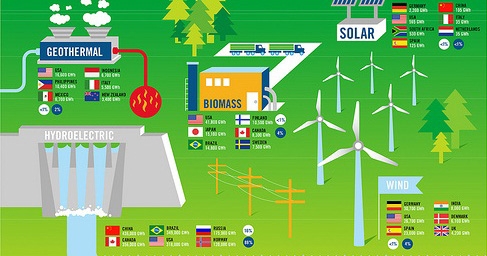The Clean Energy Business Council, a trade group based in Abu Dhabi, has released a map tracking the 150 renewable energy projects that are under way across the region.
"By making this data available to the public, we hope to push further the development of the renewable energy industry," said Aaron Bielenberg, CEBC's chief executive. "The previous general lack of awareness made policymakers and capital providers feel the industry was smaller and hence riskier than it actually is."
The interactive map is based on Google technology, and features solar, wind, geothermal and biomass plants. It will be updated regularly to track the progress of alternative energy in the region, said the council.
Mena is lagging the rest of the world in adopting renewable sources of energy. It is, however, catching up
The Middle East and North Africa region is home to about half of the world's proven crude oil reserves but is lagging the rest of the world in adopting renewable sources of energy. It is, however, catching up.
In the past 10 years, installed capacity of clean energy has doubled, according to the data provider energici. Countries including the UAE have adopted renewables targets in recent years. Abu Dhabi aims to generate 7 per cent of its electricity from alternative sources by 2020, while Dubai this year announced plans for a 1,000-megawatt solar park, to be completed by 2030.
Masdar, Mubadala's clean technology company that has been charged with developing Abu Dhabi's renewable sources, will soon complete a 100MW solar array near Liwa, one of the largest of its kind worldwide.
Abu Dhabi aims to generate 7 per cent of its electricity from alternative sources by 2020
Abu Dhabi is home to the International Renewable Energy Association (Irena), an intergovernmental organization working towards the adoption of clean forms of energy around the world.
Adnan Amin, Irena's director general, is optimistic about the future of clean energy. "The one sector that continues to grow is investment in clean energy. Last year, there was substantial investment again."
The clean energy sector first became a S$1 trillion industry last year, after investment in alternative sources of energy amounted to $256 billion that year
Governments across the Arabian Gulf are turning to renewable energy to decrease their dependence on fossil fuels. Natural gas, the traditional fuel used in power generation, is becoming a scarce resource because of the rapid increase in demand for electricity. They are aided in their efforts by falling prices for renewables.
The National
17 October













































































